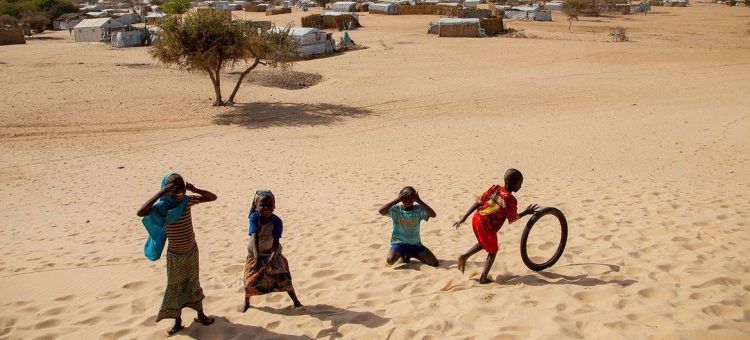In West Africa, a simple handshake is far more than just a polite greeting. It is an intricate social ritual that varies across countries, regions, and ethnic groups, with each handshake style carrying its own unique cultural significance. The way people greet each other through handshakes speaks volumes about social status, respect, friendship, and even local customs. Understanding the nuances of handshakes in West Africa can offer travelers valuable insight into the diverse cultures of the region and help foster better connections and mutual respect.
In this article, we will explore why handshakes in West Africa are so important, how they vary across the region, and what different styles of handshakes convey about social relationships.
1. The Role of Handshakes in West African Culture
In West Africa, greetings are an essential part of daily life. They are often the first form of communication when meeting someone, and they set the tone for the interaction that follows. Handshakes are used not just for saying hello, but for establishing rapport, showing respect, and acknowledging the other person’s presence.
While the handshake itself is common in many cultures worldwide, in West Africa, the gesture is often more elaborate, carrying a deeper significance. A handshake in this context is viewed as a sign of mutual recognition and respect. For instance, a firm, warm handshake is often seen as an expression of confidence, while a softer or more delicate handshake can indicate humility or respect.
In many West African countries, handshakes are the foundation of social interaction, and they can reveal the nature of the relationship between the individuals involved. The way a handshake is performed—its duration, intensity, and additional gestures—helps communicate a variety of messages, such as friendship, formality, or even hierarchy.
2. Variations Across West African Countries
West Africa is home to numerous ethnic groups, languages, and cultures, each with its own interpretation of what a handshake represents. While there are commonalities, the way handshakes are conducted can vary greatly depending on the country, region, and social context.
Ghana: A Symbol of Respect and Solidarity
In Ghana, handshakes are an integral part of everyday life, and there are several types of handshakes used depending on the relationship between the individuals. A common greeting involves a firm handshake that is followed by the snapping of fingers or a quick clasp of the wrist. This gesture is not just a handshake but a demonstration of mutual respect and solidarity.
For example, when greeting an elder or a superior, the handshake might be softer or more restrained, reflecting the respect for hierarchy. On the other hand, among close friends or peers, the handshake may be more elaborate, incorporating additional hand movements such as the finger snap or even a brief embrace. In some Ghanaian cultures, the manner in which a handshake is performed can also express personal interest and affection.
Nigeria: A Handshake for Respect and Formality
In Nigeria, handshakes are an important social ritual, particularly when meeting new people or in professional settings. The Nigerian handshake is generally characterized by a firm grip, accompanied by direct eye contact, which conveys self-assurance and sincerity. It is often seen as a gesture of respect when greeting elders, but there are variations based on age and familiarity.
A Nigerian handshake between men may often be accompanied by the “slap” or “click” of the hands, where they add a slight slap to the grip before pulling apart. The slap indicates camaraderie and shared understanding, while the intensity of the slap can signal the closeness or strength of the relationship. For women, handshakes are often lighter, reflecting a more reserved cultural stance, though the style of handshake may depend on individual preferences.
Senegal: Emphasizing Warmth and Generosity
In Senegal, a handshake can take on a more intricate form, often involving not only the hands but also the use of facial expressions and even verbal greetings. Senegalese people often engage in a “double handshake,” where both individuals shake hands, then briefly clasp each other’s wrist, followed by a more personal form of communication through eye contact and facial gestures. This handshake reflects the warmth and openness of Senegalese culture, and it is considered a way of building strong personal connections.
Handshakes are very important when meeting new people, and the quality of the handshake can indicate the depth of the relationship. A handshake that is firm but not overly long shows good manners, while a longer handshake may signal familiarity or friendship. For men and women alike, a handshake is an opportunity to express goodwill, and it is typically accompanied by a polite greeting like “Nanga def” (How are you?).

3. The Influence of Religion and Tradition on Handshakes
Religion plays a significant role in shaping the social customs of many West African countries, and this is reflected in their handshake practices. In some Islamic communities, particularly in countries like Mali, Niger, and Mauritania, handshakes between members of the opposite gender are often avoided as a sign of modesty and respect for religious teachings. In these cases, handshakes may be replaced by other forms of greeting, such as a respectful nod or a gesture of the hand placed over the heart.
In Christian communities, handshakes tend to be more formal and are often accompanied by a prayer or blessings. When greeting an elder, it is common for younger people to use their right hand and place the left hand on their chest to show humility and respect. The gesture reflects the values of respect and community that are deeply rooted in the region’s religious practices.
4. The Symbolism of the Left Hand
In many West African cultures, the left hand is considered impure or disrespectful. It is not uncommon for people to greet each other or pass items with their right hand, as the left hand is traditionally associated with tasks that are considered unclean, such as using the bathroom. As such, when shaking hands, it is important to offer your right hand, as offering the left hand may be seen as an insult or a sign of poor manners.
Even when using the left hand is unavoidable, such as when the right hand is occupied or injured, it is important to acknowledge the gesture by showing extra humility, such as lowering your gaze or offering a formal apology for using the left hand.
5. Handshakes as a Tool for Building Social Connections
Handshakes in West Africa are not merely a social formality; they play a critical role in relationship-building. In many West African societies, trust and mutual respect are foundational to social interactions, and handshakes serve as a way of demonstrating these values. When greeting someone, the handshake is often extended for a few moments longer than in Western cultures, giving both parties time to establish a sense of connection and mutual understanding.
In many cultures, the handshake is followed by questions about family, health, or one’s well-being. These inquiries are part of the greeting ritual and show genuine interest in the other person’s life. By taking the time to engage in these exchanges, travelers can gain insight into local values, and this engagement can help foster goodwill and open doors to further interactions.
Additionally, in West African business or social contexts, the handshake is often an essential part of forming partnerships or alliances. The nature of the handshake—whether firm, brief, or elaborate—can indicate the level of trust, the strength of the relationship, or the degree of formality between the two parties.
6. Conclusion: A Symbol of Connection and Respect
Handshakes in West Africa are far more than a simple exchange of pleasantries; they are a complex social practice imbued with deep cultural meaning. They reflect the values of respect, social hierarchy, and personal connections that are fundamental to the diverse societies of the region. By understanding and respecting the intricacies of these handshakes, travelers can not only make a good first impression but also foster meaningful relationships that transcend language barriers and cultural differences.
Whether in Ghana, Nigeria, Senegal, or beyond, the handshake serves as a window into the heart of West African culture. It symbolizes a mutual understanding, a willingness to engage, and, most importantly, a recognition of shared humanity. By adapting to these local customs, visitors can enjoy a richer, more rewarding experience in West Africa, demonstrating their respect for the region’s traditions while making lasting connections with the people they meet.





















